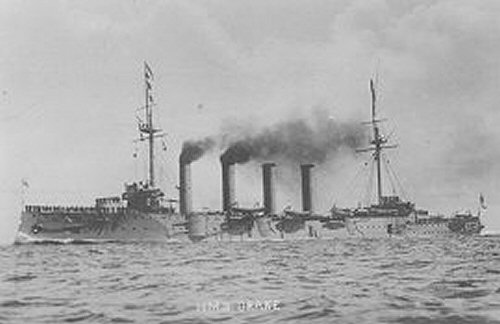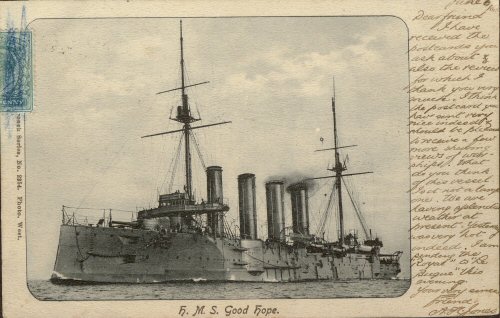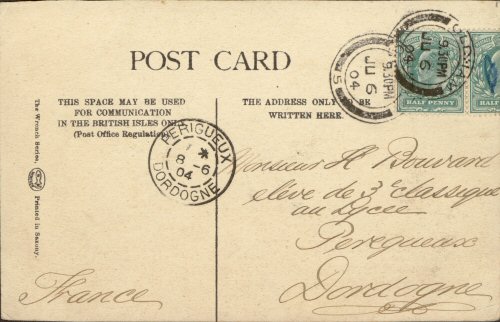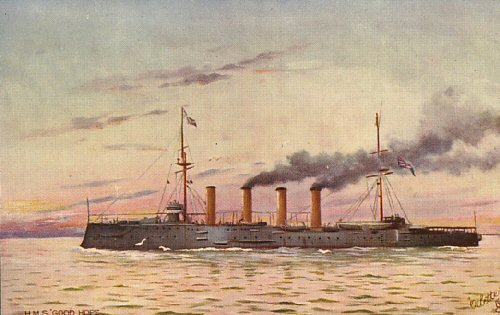
HMS Good Hope
Drake-class armored cruiser (4f/2m). L/B/D: 529.5 × 71 × 26 (161.4m × 21.6m × 7.9m). Tons: 14,100 disp. Hull: steel. Comp.: 900. Arm.: 2 × 9.2, 16 × 6, 14 × 12pdr; 2 × 18TT. Armor: 6 belt. Mach.: triple expansion, 30,000 hp, 2 screws; 23 kts. Des.: Sir William White. Built: Fairfield Shipbuilding & Engineering Co. Ltd., Govan, Scotland; 1902.
Laid down as Africa but renamed before launching, HMS Good Hope was one of four Drake-class armored cruisers ordered in 1898. At the outbreak of World War I, Good Hope was mobilized under Captain Philip Franklin to become the flagship of Rear Admiral Christopher Cradock's detached squadron tasked with preventing the destruction of Allied shipping in the South Atlantic by German raiders. When it was learned that Vice Admiral Graf von Spee's Asiatic Squadron, was heading east across the Pacific, the Admiralty dispatched the pre-dreadnought battleship Canopus to support Cradock's force, which consisted also of the armored cruiser Monmouth, under Captain Frank Brandt, the light cruiser Glasgow, and the armed merchant cruiser Otranto. Cradock relegated Canopus to shepherding his colliers as he sailed into the Pacific in search of Spee. On the afternoon of November 1, about 50 miles off Coronel, Chile, the two fleets encountered one another and Cradock sailed into battle against hopeless odds. Among the other defects of both Good Hope and Monmouth was that their main-deck 6-inch guns were useless in heavy seas, which meant that the brunt of the offensive action had to be carried by Good Hope's two 9.2-inch guns. Outmaneuvered by Spee's ships, Cradock was brought to battle at about 1900. Silhouetted against the setting sun and unable to close with the German ships, Good Hope was hit by at least thiry-five armor-piercing shells from Scharnhorst, and about an hour after the battle started, she sank with all hands (919 crew)


